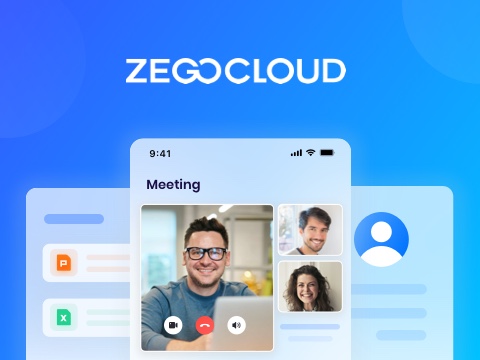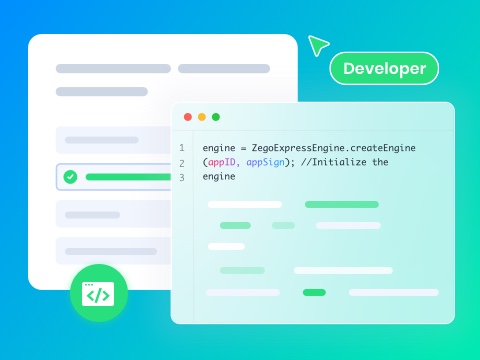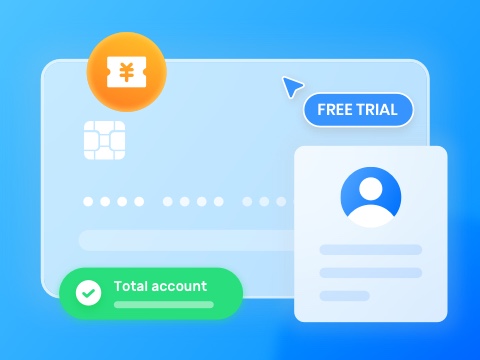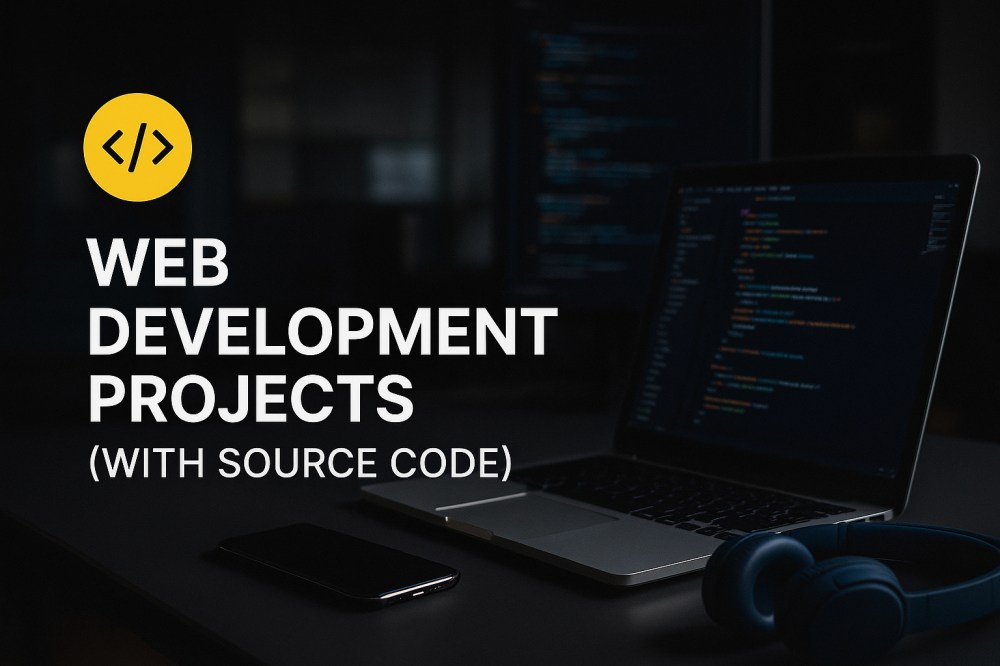The need for strong websites and useful online tools keeps growing in almost every field and industry today. Moreover, many people now start learning web development to build real projects and improve their coding knowledge fast. Here, working on practical projects helps you understand concepts better and grow your problem-solving skills. Hence, this guide shares 20+ simple to advanced web development projects with source code to help you learn quickly.
If your project involves real-time features like video calls, chat, or live streaming, platforms like ZEGOCLOUD can save you a lot of development time. It offers SDKs for fast integration and even gives you 10,000 free minutes to test your app in real conditions. Perfect for anyone working on communication or collaboration tools.
What is Web Development?
Web development includes all the tasks of creating, designing, and maintaining a website or web application. From preparing non-design prototypes to executing all the coding aspects, web development covers everything. Moreover, this approach covers 3 major types: Front-End Development, Back-End Development, and Full-Stack Development.
Front-end web development is mainly responsible for a website’s visual elements, which visitors see and experience. Meanwhile, the back-end web development is known as the backbone of the website. It helps to make your website functional and develop connections with databases. At the same time, full-stack web development includes front-end and back-end techniques to design, test, and deploy web applications.
How to Select the Right Web Development Project?
Opting for the right web development project can shape your learning journey and future career. Therefore, this section will help you learn through key factors that help you pick the best project for growth:
1. Define Your Web Development Goals
Before you begin, it is important to clarify what you need to accomplish in web development. In this context, focus on one area, such as improving frontend design, building APIs, or handling databases. For example, choose a front-end-focused project if you aim to enhance layout design and user experience understanding.
2. Assess Your Current Skill Level
You should also understand your level of skill and ensure that you use it in a suitable web development project. Especially, new users are recommended to practice with static pages created using HTML, CSS, and basic JavaScript, and then to create dynamic websites. When you are comfortable with frameworks or backend tools, move to more complex projects.
3. Pick the Right Technology Stack
In addition, this specific step shapes how smoothly your web development project runs and grows over time. Thus, when choosing the tools, programmers must focus on the nature of the project, e.g., React can be used to develop a dynamic interface, and Node.js to realize live functionality. In addition, you must consider long-term needs such as performance, scalability, and security when bootstrapping a project.
4. Estimate Time and Resources Needed
It basically helps you plan your web development project realistically and avoid delays or stress. Furthermore, developers should break the project into smaller tasks. From designing and coding to testing, setting deadlines for each part helps a lot. Thus, proper planning ensures you stay on track and complete your project within the available time.
5. Find Projects with Available Source Code
Opting for such projects with available source code gives you a strong starting point and deeper learning. While utilizing them, you can study how others structure code, solve problems, and apply best practices in projects. For that, use trusted platforms like GitHub to explore open-source projects that match your goals and current skill level.
Web Development Project for Beginners [Source Code]
When beginners want to develop a website using open-source platforms, we will provide a detailed table with project names and source codes:
| Project Name | Source Code Repository |
| Mini Web Projects (HTML, CSS, JS) | Source Code |
| Simple Frontend Projects | Source Code |
| Tourism Website – Adventure | Source Code |
| Tour Website (HTML, CSS, JS) | Source Code |
| E-learning Website | Source Code |
| Memory Matching Game | Source Code |
| Adventour Travel Website | Source Code |
| Culinary King E-commerce Frontend | Source Code |
| Responsive Lagunitas Clone Website | Source Code |
Intermediate-Level Web Development Projects [Source Code]
This section covers mid-level web development projects, which help sharpen your skills with more dynamic features:
| Project Name | Source Code Repository |
| College Prediction System (HTML, PHP, SQL) | Source Code |
| Tour & Travel Project with Login Feature | Source Code |
| Placement Portal Management System | Source Code |
| School Management Web App | Source Code |
| Appointment Management System | Source Code |
| Counsellor Portal System | Source Code |
| Diploma Final Year Project (PHP) | Source Code |
| E-Learning Platform with Responsive UI | Source Code |
| Developer Portfolio in React.js | Source Code |
Advanced Web Development Projects [Source Code]
For experienced learners, these advanced web development projects offer full-stack features and deeper technical challenges to master:
| Project Name | Source Code Repository |
| ASP.NET Core Web API with React + MongoDB | Source Code |
| React.js Appointment Manager with API Integration | Source Code |
| Full-Stack Web Dev Training Repo (Angular + API) | Source Code |
| Responsive Clone Site with GSAP Animations | Source Code |
| Developer Projects Directory with Multiple Apps | Source Code |
Best Practices in Web Development Projects
Following best practices helps developers create clean and long-lasting web development projects. So, the following parts provide you with some essential tips that help you write better code and create effortless projects:
1. Fluid Layout
Responsive design makes your site fit on a variety of screen sizes so that it will appear presentable on phones, tablets, and computers. Plus, it uses flexible grids, CSS media queries, and images that resize based on screen width. Furthermore, tools like Bootstrap or CSS Grid help build smooth, responsive layouts with less effort.
2. Optimized for Mobiles
Another essential practice is that your website should load fast and effortlessly on smartphones and tablets without delays or layout issues. At this particular time, you can use techniques like proper viewport settings and lightweight pages to improve performance. Moreover, libraries like AMP and LazyLoad help improve the mobile experience effectively.
3. Maximize Performance
Fast websites keep users engaged, as Google reports a 32% higher bounce rate when load time rises from 1 to 3 seconds. Thus, developers should use smaller image sizes, remove extra code, and choose high-speed tools for better results. Besides, regular testing ensures your web development project stays fast and works well for every visitor.
4. Safety Protocols
Robust security measures safeguard your site against hackers and information leakage that may hurt the users and your image. To do that, you have to use HTTPS to encrypt data and implement robust login systems on your site. In addition, tools like Cloudflare and Let Encrypt can help developers in securing their websites via robust security measures.
5. Universal Browse
It is advised to make your web app compatible with almost all popular browsers, including Chrome, Firefox, Safari, and Edge. In this regard, you can also use some tools like BrowserStack and test your web pages with browsers. In this way, it ensures a steady experience and increases trust, which plays a role in attracting and keeping an audience.
Challenges in Web Development Projects
Since creating websites can be exciting, it also comes with various hurdles, including design and performance. Below, we will explore a few challenges in web development projects to help both beginners and advanced developers address them:
- Site Compatibility: As we know, people use different screen sizes, so websites must look and work well on each one. Besides, testing for every device can take time and may still leave issues on certain platforms or browsers.
- Loading Problems: Slow websites frustrate visitors, which leads them to leave before even exploring your content or services. Furthermore, heavy images, multiple scripts, and bad code usually cause slow site issues and affect performance.
- User Privacy: In addition, websites collect personal information, which must be kept safe from hackers and online threats. Here, adding security layers is not always simple, and missing them can lead to serious data leaks.
- Resolve Bugs: Errors and bugs show up anytime, even after the website seems complete and tested. In such a case, finding the cause takes time, and users may get annoyed if they face problems while browsing.
- Traffic Management: When many people visit the site simultaneously, it can either crash or respond very slowly. Thus, the server must be strong, or high traffic will lead to downtime and even a poor experience for visitors.
How Can ZEGOCLOUD Help with Web Development Projects
ZEGOCLOUD provides ready-to-use UI components that help build visually appealing interfaces effortlessly across all platforms. In addition, in-app chat SDKs can be employed by developers to integrate messaging, which supports offline messages and push notification alerts. You can also use layout SDKs that are customizable to adjust the interface design according to your branding specifications.
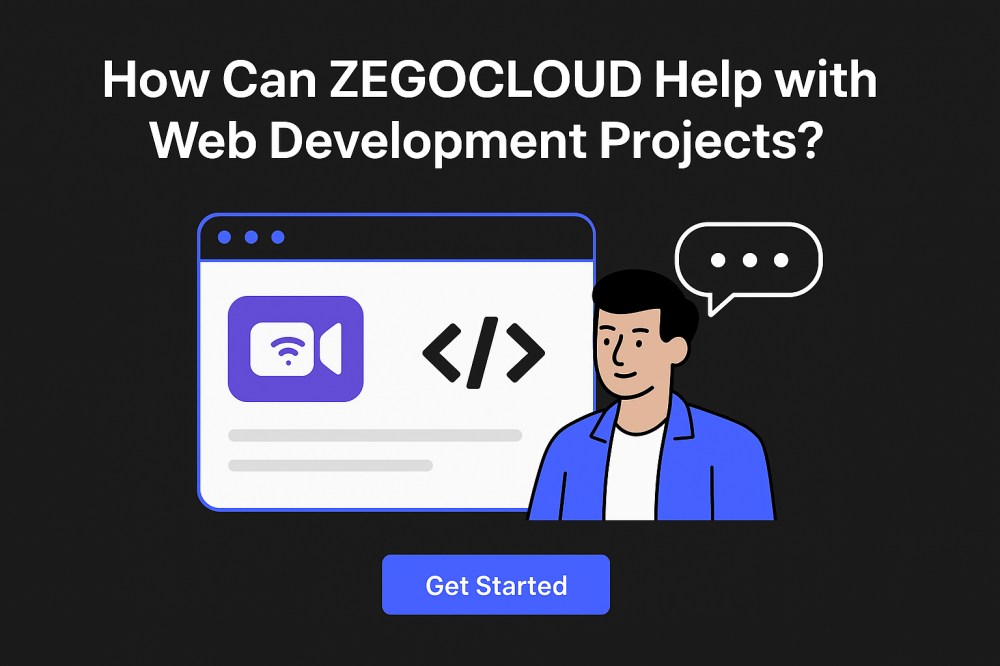
ZEGOCLOUD also offers the AI Agent API, which enables speech recognition and voice replies using real-time models. While creating a web development project, developers can insert video call SDKs into their sites effortlessly. Furthermore, it comes with screen sharing that lets participants share either their entire screens or a specific app during video calls.
Besides, ZEGOCLOUD supports AI-driven direct call APIs that can deliver 40kHz audio sampling and a latency of 300ms. This feature also provides noise cancellation for clear and distortion-free communication experiences. Moreover, it offers video enhancements with AI effects such as AR filters and beautification for an HD and interactive user interface.
This platform also lets developers personalize their media display using custom layout settings for a better viewing and sharing experience. Plus, ZEGOCLOUD even provides 15,000+ device support across all the major OS platforms, making it an effortless choice for every developer.
Conclusion
In conclusion, web development becomes effortless when you build real projects, from beginner to advanced levels, using source code examples. Moreover, this helps boost your coding skills, improve learning, and make ideas work on real websites.
As you follow the best practices and solve common challenges, you can create reliable and smooth sites. For adding modern features like video and voice chat, ZEGOCLOUD is the right tool to complete your project.
Read more:
FAQ
Q1: Which project is best for web development?
The best web development project depends on your skill level and goals. Beginners can start with portfolio websites or to-do apps, while more advanced developers can build e-commerce sites, real-time chat apps, or full-stack dashboards.
Q2: What is a web development project?
A web development project is any practical application or website you create using web technologies like HTML, CSS, JavaScript, and backend tools. It helps you apply your coding skills, solve problems, and build a strong portfolio.
Q3: Is 2 months enough for web development?
Yes, 2 months is enough to learn the basics and build small to mid-level projects — especially if you focus consistently. You can complete projects like landing pages, blog platforms, or integrate real-time features using SDKs like ZEGOCLOUD.
Q4: What is a live project in web development?
A live project is a working website or app deployed on the internet and accessible to users. It often includes real user interaction, such as login systems, live chat, or video streaming — making tools like ZEGOCLOUD useful for adding these real-time features.
Let’s Build APP Together
Start building with real-time video, voice & chat SDK for apps today!



